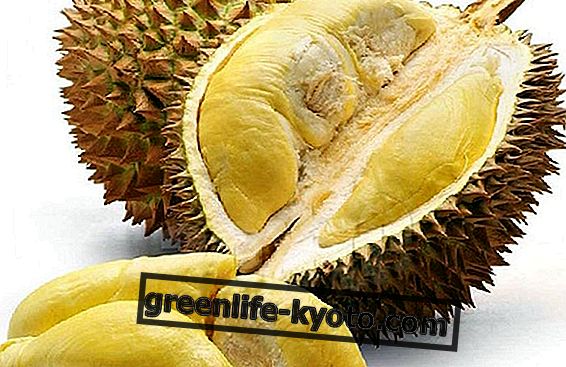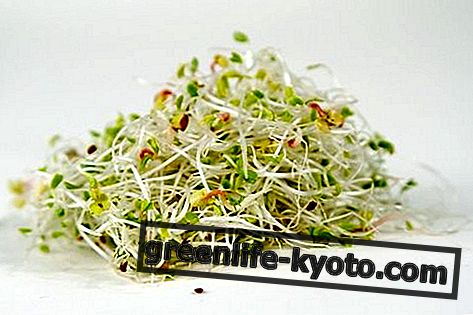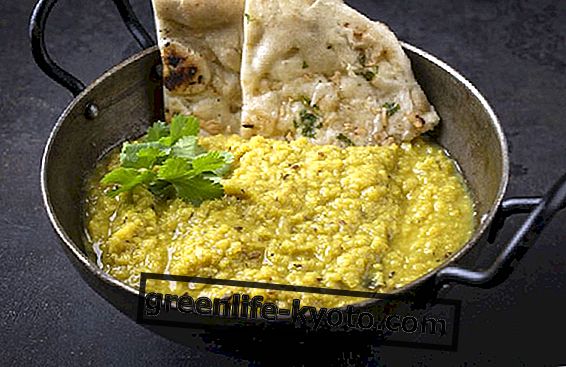
One of the first things that we easily notice turning on the web in search of information on the fruit of the durian, is the attempt of many to describe its unexpected qualities, or to experience approaching it and tasting it for the first time, generally considered a extreme experience for the less well-equipped palates, and around which stories or real urban legends were born and continue to be born.
Certainly it is a fruit that makes people talk a lot, especially with the development of the internet that allows us to comb through the culinary habits of distant countries and, if we wish, to find a way to buy the fruit without having to travel all the way to Asia.
Two things are certain: it is an expensive fruit (but there are others that are much more expensive) and it is, as we will learn a little more, a real superfood and one of the most complete foods among the fruits .
The pros of the durian: more than a fruit
In countries like Malaysia and Thaialandia, durian is truly the king of fruits: there are real rooms dedicated exclusively to the sale and consumption of durian, with the characteristic of being open on all four sides so as not to allow the odorous exhalations of the fruit to accumulate indoors. Because what is said about it is true and often not even exaggerated: the durian has a very strong and anything but attractive smell .
Yet not only the locals love the fruit, many people come from abroad and others are sent the fruits: the durian has a consistency similar to that of a very tender and buttery meat, it is rather dry and therefore sates easily. No other food is known that can explode in so many different, contrasting and persistent flavors, so that continuous aftertaste remains in the mouth even for hours after eating it.
Inside you can enjoy in just one bite the sweetness of the mango, the complexity of a coffee cream, the smell of onion, the hints of honey, explosions of chocolate, spicy hints of jasmine or perilla, the body of the egg hard and aged cheese, the energy of cognac and a neutral bottom of pumpkin or almond paste. How else would it be possible?
The cons of the durian: an experience too intense
However, there are plenty of durian detractors. Not all palates are ready for a hurricane of flavors, a caledoscopio of aftertaste sometimes antithetical, which is often poured too intensely.
The pasty persistence of flavors is experienced by many more as a defect than as a positive feature. Probably the real difficulty, the biggest obstacle is being able to bring a mouthful so smelly to the mouth, because it is true: the durian has an unquestionably bad smell and difficult to describe.
The gases that come out of the fruit, even before it is opened, recall the putrefaction and resemble the smell of sewage, of carcass, of onions gone bad. This is why there are numerous prohibitions related to durian : it cannot be introduced in closed rooms, in hotel rooms, nor transported by plane, and many states prohibit its cultivation.
Some people believe that the experience of eating a durian is too exaggerated and is not as intense as described; often this is due to the fact that they tasted frozen pulp, which then lost a lot in terms of smell and taste: the open durian quickly diminishes its potential.
Also the Jambul is among the fruits considered superfood
Property of the durian
Curiosities aside, it is worth eating the durian: in general, each type of fruit abounds in a particular vitamin or substance but hardly presents a large content of a broad spectrum of vitamins, a fruit rich in anthocyanins is unlikely to be rich in carotenoids.
In this the durian is a stupendous exception: it is at the top of the list for vitamin C but it is also first in terms of flavonoids and anthocyanins, while it is also very high in the ranking of the carotenoid-richest fruits, without considering the good content of vitamins of group B.
How to find the durian
But how can it be found in Italy? We can buy packs of frozen pulp or dehydrated chips in ethnic food stores, but to enjoy it fresh without traveling to the other side of the world you can use two roads: contact an exotic online fruit retailer, or try to match the owner of an ethnic food store, who are often available to find it but only to order, since exhibiting a durian in the store would mean removing all the customers at once!
Recipes with durian
Given all the properties of durian, the ideal would be to close the nose and consume it fresh, natural, as is done in most cases, however it is not a mortal sin to use durian and the immense gustatory resource that it also represents in different recipes. Let's see some of them.
In Malaysia there is what seems to be a trick rather than a recipe, to overcome the smell of the fruit: mix the pulp with coconut milk, yogurt and a teaspoon of curry, creating a mix called tempoyak .
In Asia, it is used to make durian and mint ice cream with chocolate chips : mint gives balance to durian, covering its odor, making durian goodness available to all palates. Impossible not to mention the durian chips, much less aggressive in taste and easy to eat.
With a piadina it is possible to adapt an Indochinese dish, the durian roti, to our local cuisine: durian pulp and chocolate spread to fill a hot piadina and you're done.
In Thai cuisine there is a cream of durian, khaki and cinnamon passed to the mixer which, it seems, is excellent for dressing sweet and sour salads .













